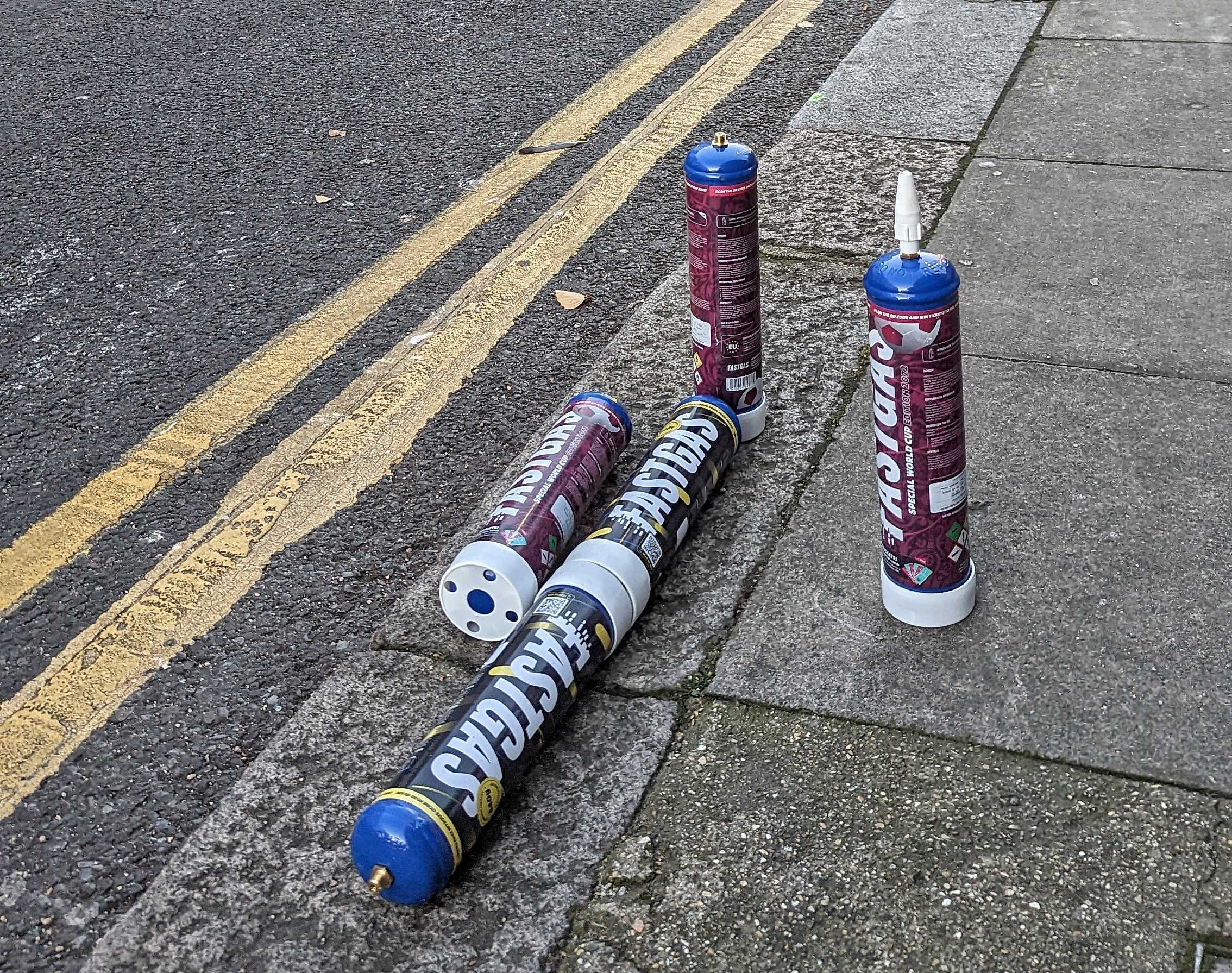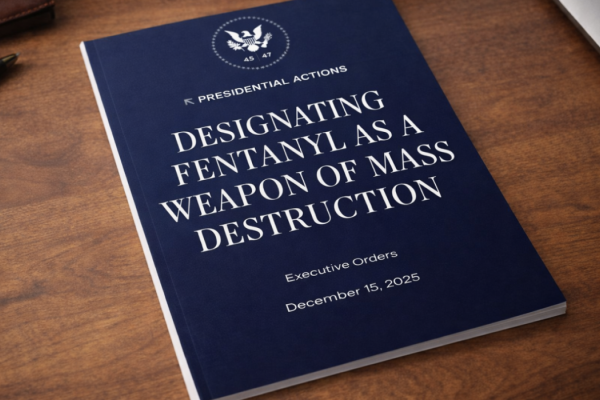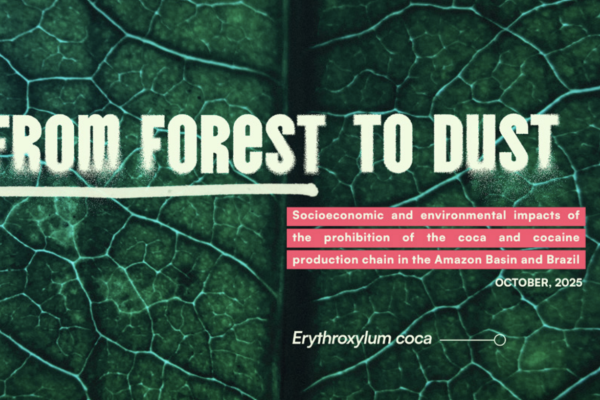1st February 2023
The UK Government must reconsider its threat to criminalise possession of Nitrous Oxide - a move that would be harmful and counterproductive. There are better ways to reduce health risks and antisocial behaviour associated with the drug
Nitrous oxide gas (sometimes called 'laughing gas') is available in metal canisters of various sizes for use in catering (mostly for making whipped cream), in medicine (mixed with oxygen as ‘Nitrox’ used as an anaesthetic in childbirth, dentistry, and emergency pain relief), and for some sports car speed boosters. It is also widely used as a recreational drug, inhaled (usually from a balloon) to provide a short acting euphoric high with some psychedelic qualities.
According to a report in The Times last week (also reported in the Guardian, un-paywalled). “Ministers are preparing to ban the sale and possession of laughing gas as part of a crackdown on antisocial behaviour.” Classifying nitrous oxide under the Misuse of Drugs Act (MDA) would mean that possession of nitrous oxide without a ‘legitimate reason’ could be prosecuted as a criminal offence (unlike its current status, controlled under the Psychoactive substances Act, for which possession is not criminalised).
There seems little doubt criminalisation is where the UK Government is heading. Nitrous oxide was referred to the Advisory Council on the Misuse of Drugs (ACMD) for a review by then-Home Secretary Priti Patel in 2021, mooting its classification under the MDA. The current Home Secretary, Suella Braverman, “backs the move” according to The Times report.
This growing political pressure for criminalising possession of nitrous oxide has notably been framed less in terms of health risks, and more as a way of addressing antisocial behaviour, specifically problems with litter. According to The Times, the Levelling-up, Housing and Communities Minister, Micheal Gove, said that “an action plan on antisocial behaviour would be published shortly and include measures to crack down on the drug.” Prime Minister Rishi Sunak similarly cited Nitrous Oxide canisters as a visible sign of antisocial actions, which he called a “gateway to more extreme crimes”, suggesting “They spray graffiti on war memorials, discard needles and Nitrous Oxide canisters in children’s playgrounds, gang together and cause disorder and disruption.”
The proposals raise a number of important questions and concerns.
Marginalisation of the ACMD... again
Ministers are clearly teasing an imminent ban on possession of Nitrous Oxide under the Misuse of Drugs Act in public speeches and via anonymous ‘sources’ briefing newspapers, before seeing the analysis and recommendations of the ACMD, that the Government itself requested. They have wilfully discarded even the pretence that policy decisions are guided by evidence-based recommendations of the Governments own expert advisory body.
The politicisation of drug classification decisions, and marginalisation of ACMD expert advice has an unfortunately long and ignominious history. There are many examples, but perhaps most notoriously, Prime Minister Gordon Brown announced cannabis was to be reclassified Back to Class B (from C), before the ACMD had reported back on the review the Government had itself requested (which for the third time of asking, recommended cannabis should be class C, and was ignored).
It is hard to predict what the ACMD will recommend, but the Ministerial pressure to ‘fast track’ the report’s publication, so that a ‘crackdown’ on nitrous oxide can be included in the launch of April’s Antisocial Behaviour Strategy, does raise concerns that the already under-resourced ACMD (made up of unpaid volunteer experts) are being put under undue political pressure to deliver what the Government want to hear.
The ACMD did, in fact, review Nitrous Oxide, as recently as 2015. Back then, having outlined risks, and noting rising use, they called for better controls on supply chains, and local court orders to address litter issues, but notably did not call for nitrous oxide to be criminalised under the Misuse of Drugs Act.
The ACMD, however, can and do change their views based on emerging evidence. Use has continued to rise since 2015 (although falling notably in the most recent survey data) and worrying patterns of high frequency use and related harms have become more common (see below). However, even if the ACMD does update its position on nitrous oxide health risks, as seems reasonable given emerging evidence, the key concern must be the serious harms that would result in criminalising its possession (which the Government appears determined to do regardless of what the ACMD concludes).
The elephant in the room: zero evaluation of criminalisation
A fundamental problem with the operation of the ACMD and the classification system it oversees, is that their evidence based drug risk assessments are never followed up with any routine evidence-based evaluation of the impacts of changing a drug's legal classification. This yawning abyss in the evidence fatally undermines the entire classification system the UK’s drug laws are based on. Systematically ignoring impacts of changes in policy and law, specifically the harms of increased criminalisation, is the precise opposite of evidence-based policy making.
As Transform, Release, Global Drug Survey, Drugscience, and The Royal Society for Public Health noted when the nitrous oxide possession ban was first mooted in 2020, criminalisation of thousands of young people (nitrous is the second most popular illegal drug in the UK after cannabis - used by an estimated half a million people each year) would be disproportionate and unjustified, a huge and expensive burden on an already overstretched criminal justice system, harmful, and ineffective as a public health strategy.
The burden of criminal records such a move would create would disproportionately impact on young people, particualrly those from socially and economically marginalised communities, already over-exposed to policing, surveillance and stop and search.
Not only would further criminalisation increase harms, but the lucrative market supplying the canisters could move further into the unregulated criminal sphere making Nitrous use more risky. As the European drug monitoring agency (the EMCDDA) notes:
‘Restricting supply may lead to the involvement of criminal organisations. This may increase theft and diversion from the legitimate supply chain. It may also lead to homemade or illicit production of Nitrous oxide. Methods available on the internet, including do-it-yourself videos, pose a high risk of explosion and contamination with nitrogen oxides, which cause lung toxicity that could be life-threatening’
So what should be done?

Harm reduction
As
with all drugs, nitrous oxide risks are mediated by consumption
behaviours; how much and how it is used. For the vast majority,
occasional use of a few balloons in social settings is actually very low risk compared to most other drugs. But for a minority using at high frequency for extended periods, the risks can be serious
- causing vitamin B12 deficiency and debilitating nerve damage. These
risks have particularly been associated with newer large nitrous
canisters that can fill around 80 balloons (see photo above), as opposed to the more familiar small ‘whippets’ that can only fill one balloon (see header photo), or in the Netherlands - even larger 2-4kg canisters containing 200-400+ balloons.
Given the rising levels of use, and in particular the growing problems related to high frequency use amongst a small minority, a change in the public health response is clearly needed. On the supply side, this could include pushing the market back towards the smaller whippets by ending sales of the bigger canisters more associated with higher risk behaviours, or restricting their sales of the bigger canisters to licensed ‘legitimate’ users.
There is also an urgent need to invest in provision of more
harm reduction information to key target populations - in particular
explaining the risks of high frequency use. Crew 2000 have produced this
excellent Nitrous Oxide information and harm reduction resource.
A key part of this information provision must involve including health,
risk and harm reduction information on the packaging and at point of
sale (in person, or online) of all Nitrous Oxide products widely
consumed non medically. This information could include key headline
messages, as well as a link or QR code to more detailed information such
as that produced by Crew2000. This proposal, however, presents a legal
catch-22, in that consumption health warnings imply sale for
consumption, which is explicitly prohibited (whether under the Medicines
Act, Psychoactive Substances Act, or Misuse of Drugs Act). A pragmatic
solution to this dilemma does not, however, seem beyond the wit of
policy makers - with existing approaches to misuse of inhalants/solvents
offering some potential models.
As so often, responses to
emerging drug problems that default to politically motivated punitive
enforcement crackdowns are invariably counterproductive; failing to
deter use, enriching criminal market actors, criminalising and damaging
the life prospects of vulnerable populations, and increasing health
harms. We can do a lot better.
The littering issue
While the Prime Minister's association of people who use nitrous oxide with people who graffiti war memorials and leave needles in playgrounds is unhelpful and stigmatising tabloid hyperbole, there is a very real and visible issue with littering of nitrous canisters. But littering is already illegal (subject to fines) - and criminalising possession won’t make littering any more illegal.
If this Government is serious about tackling nitrous litter they could much more simply introduce a deposit scheme (and mandatory recycling by manufacturers) - lets say 50p for each whippet, and £5 for each 0.6kg mid size 80 balloon canister. Evidence for recycling schemes for other products (like plastic and glass bottles) suggest this would dramatically reduce if not eliminate the litter problem almost overnight. Lets do what works - not what gets cheap headlines.
Further informantion
Ballooning panic: the truth about Nitrous Oxide
Detailed discussion (a youtube ‘think-in’ webinar from Tortoise media) on Nitrous Oxide risks and policy responses with Steve Rolles and Plinio M Ferreira
EMCDDA’s 2021 overview of Nitrous Oxide consumption behaviours, risks, changes in prevalence and policy responses across Europe.
Crew 2000’s Nitrous Oxide information and harm reduction resource
Header photo "Laughing Gas, Woronzow Road, NW8" by TonyHall is licensed under CC BY 2.0.
Discarded canisters photos: Steve Rolles/Transform
Text: Steve Rolles




